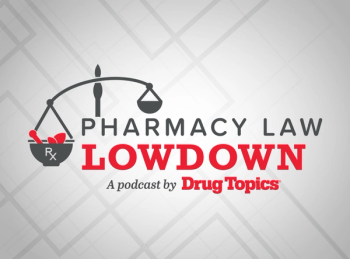
Lower pill burden, novel therapies coming for HIV
An estimated 39 million people worldwide are currently infected with the human immunodeficiency virus (HIV). According to the Centers for Disease Control & Prevention, more than 44,000 new cases of HIV infection were diagnosed in the United States in 2004. Many of these patients will be taking drug "cocktails" consisting of highly active antiretroviral therapy (HAART).
An estimated 39 million people worldwide are currently infected with the human immunodeficiency virus (HIV). According to the Centers for Disease Control & Prevention, more than 44,000 new cases of HIV infection were diagnosed in the United States in 2004. Many of these patients will be taking drug "cocktails" consisting of highly active antiretroviral therapy (HAART).
A treatment goal for physicians is to find simpler antiretroviral drug regimens that can be utilized less frequently to help improve adherence and prevent the complications caused by resistance to these products, said Kimberly Y. Smith, M.D., MPH. Smith, an assistant professor of medicine in the section of infectious diseases at Rush University Medical Center in Chicago, spoke at a recent media briefing in New York City sponsored by the American Medical Association and funded by an educational grant from Boehringer Ingelheim.
The trend is toward fewer pills with less frequent dosages, Smith said. Regimens that include two to four pills per day are currently popular and seem to be well tolerated.
In its biennial update of its guidelines for the treatment of adult HIV infection, the International AIDS Society-USA (IAS-USA) panel stated that evidence favored efavirenz (Sustiva, Bristol-Myers Squibb) as the NNRTI of choice. As recommended in the October 2004 Department of Health & Human Services (DHHS) Adult & Adolescent Treatment Guidelines, efavirenz is combined with lamivudine (Epivir, GlaxoSmithKline) or emtricitabine (Emtriva, Giliad Sciences) and either zidov-udine (Retrovir, GSK) or tenofovir (Viread, Gilead).
Protease inhibitor (PI)-based HAART regimens are being used more frequently in anitretroviral-naïve patients, Smith said. She mentioned that "boosting" PIs, or using one PI to enhance the potency of another, is now the preferred method for the most effective treatment.
For initial regimens that include a PI, the IAS-USA panel recommended a ritonavir-boosted PI, such as lopinavir (Kaletra, Abbott Laboratories). The DHHS panel recommended that lopinavir/ ritonavir be taken concomitantly with lamivudine or emtricitabine and zidovudine.
Antiretroviral-experienced patients must use other strategies to optimize treatment success, noted Kathleen Squires, M.D., an associate professor of medicine at the Keck School of Medicine, University of Southern California in Los Angeles. Squires addressed the same AMA media briefing.
Squires explained that such strategies include pharmacokinetic enhancement, such as the use of boosted PIs, and the use of new antiretroviral agents with novel mechanisms of action. She cited, for example, the recent Food & Drug Administration approval of enfuvirtide (Fuzeon, Roche), the first fusion inhibitor to reach the U.S. market. She also mentioned the investigational PI tipranavir (Boehringer Ingelheim), which is currently in late phase III studies for the treatment of HIV infection in treatment-experienced patients. According to the manufacturer, tipranavir is also in phase II testing for the treatment of pediatric and treatment-naïve patients.
Other investigational agents that Squires mentioned were integrase inhibitors, which are currently being developed by Merck & Co. and by Shionogi/GlaxoSmithKline. These drugs inhibit the enzyme necessary for the integration of the virus into the CD4+ T-lymphocyte genome.
Squires also cited the CCR5 and CXCR4 receptor antagonists, which prevent the fusion of the virus to the surface of CD4+ T-lymphocytes. GlaxoSmithKline and Pfizer are among the companies currently developing CCR5 antagonists.
"If we can give to treatment-experienced patients agents that their virus is susceptible to, we can achieve response rates comparable to those of treatment-naïve patients," Squires said. "Their virus should be susceptible to these newer agents because most of them are members of new classes of drugs that work on novel parts of the viral life cycle."
Newsletter
Pharmacy practice is always changing. Stay ahead of the curve with the Drug Topics newsletter and get the latest drug information, industry trends, and patient care tips.














































































































































